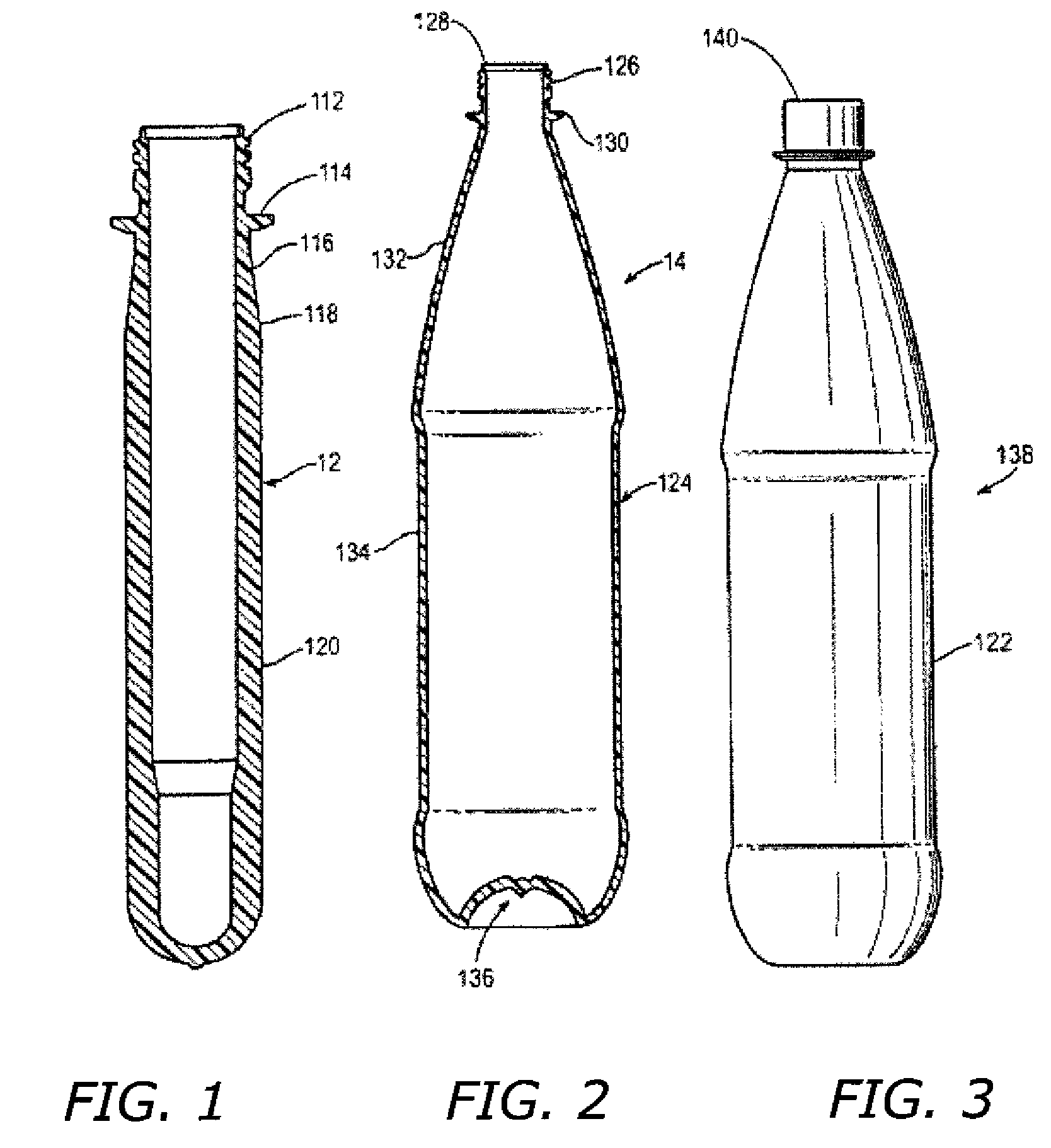Multilayer container for enhanced gas barrier properties
a gas barrier and multi-layer technology, applied in the direction of containers preventing decay, transportation and packaging, other domestic objects, etc., can solve the problems of insufficient gas barrier of pet to oxygen and carbon dioxide, limiting the use of smaller pet containers for packaging carbonated soft drinks, and higher relative loss rate, so as to enhance the gas barrier, and enhance the effect of gas barrier
- Summary
- Abstract
- Description
- Claims
- Application Information
AI Technical Summary
Benefits of technology
Problems solved by technology
Method used
Image
Examples
example
[0118]A commercially available polyester container grade resin (INVISTA, Spartanburg, S.C.) was dried in a vacuum oven at 140° C. overnight to a moisture level below 50 ppm. The low molecular weight additive, caffeine, was dried in a vacuum oven at 70° C. overnight to remove surface moisture. Multilayer containers were made with the PET as the outer two layers and the PET in combination with the caffeine as the barrier layer. The barrier layer comprised 20 weight percent of the container. Caffeine comprised 15 weight percent of the barrier layer (3 weight percent of the container). A lab scale Arburg unit cavity injection molding machine was used for injection molding. The preforms were blow molded with a Sidel SBO 2 / 3 blow molding machine to make acceptable contour containers. A 21.1 g preform made a 12 oz container.
[0119]The carbon dioxide transmission rates of the containers were then measured using a Mocon 2 / 60 model instrument at 22.2° C. and 50% relative humidity (RH) with the...
PUM
| Property | Measurement | Unit |
|---|---|---|
| molecular weight | aaaaa | aaaaa |
| weight percent | aaaaa | aaaaa |
| weight percent | aaaaa | aaaaa |
Abstract
Description
Claims
Application Information
 Login to View More
Login to View More - R&D
- Intellectual Property
- Life Sciences
- Materials
- Tech Scout
- Unparalleled Data Quality
- Higher Quality Content
- 60% Fewer Hallucinations
Browse by: Latest US Patents, China's latest patents, Technical Efficacy Thesaurus, Application Domain, Technology Topic, Popular Technical Reports.
© 2025 PatSnap. All rights reserved.Legal|Privacy policy|Modern Slavery Act Transparency Statement|Sitemap|About US| Contact US: help@patsnap.com



